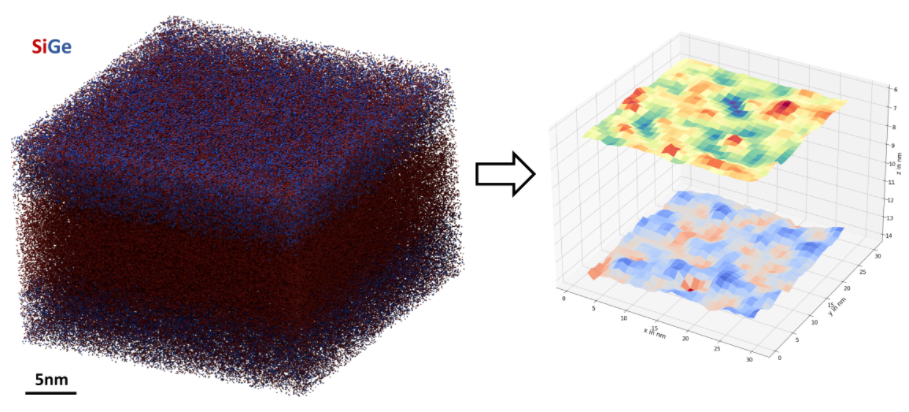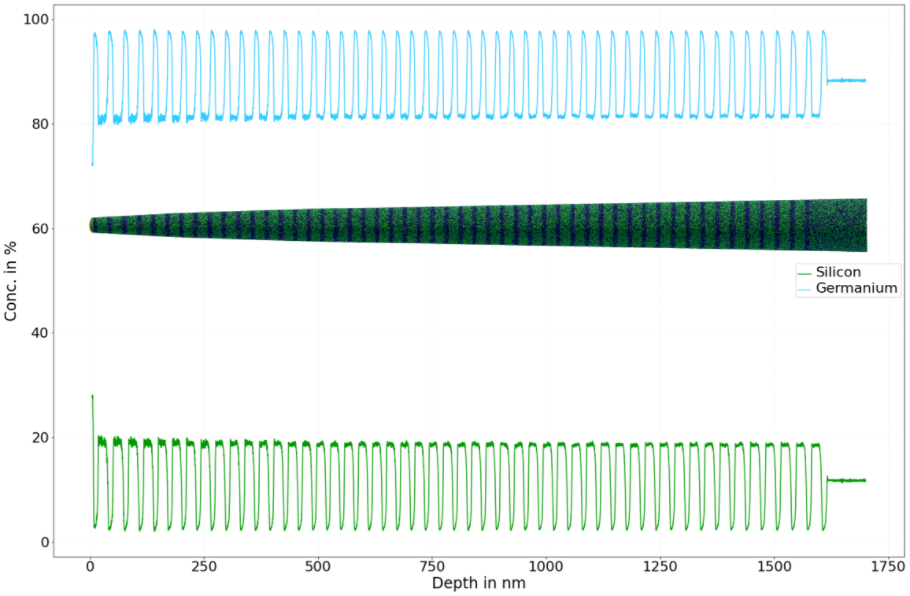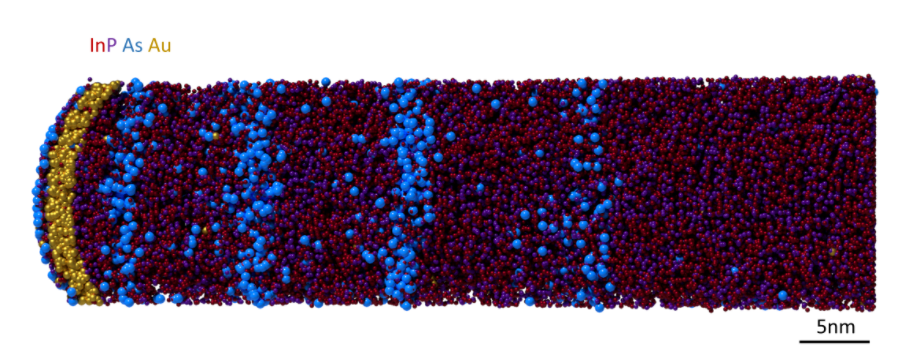Ongoing research
PolyAPT is involved in several projects centered on atomic-level studies to guide and accelerate the development of novel and enhanced functionalities relevant to a variety of applications. These applications include information technology, photonics, quantum technologies, clean energy, aerospace and transportation, metallurgy, and health and bio-integrated technologies. Below, are provided a few examples of ongoing activities.
Quantum engineering
- • Isotopically engineered low-dimensional systems.
- • Nuclear spin engineering.
- • Spin qubits and qudits in silicon.
- • Hybrid quantum systems.
- • Hole spin in a two-dimensional gas.

Figure: Three-dimensional point cloud of a Silicon quantum well used as a Spin Qubit embedded in Silicon-Germanium as imaged by APT (left) and the maps of the top and bottom interface of the quantum well (right). The material structure was fabricated by the Scappucci group at the TU Delft.
Integrated photonics
- • Silicon-integrated light emitters and photodetectors.
- • SWIR and MWIR sensing and imaging.
- • Compact THz technologies.

Figure: Atom Probe Tomography result of a 1.7 µm Ge/SiGe superlattice designed for quantum cascade lasing in the THz range. The sample was grown in the Moutanabbir group at Polytechnique Montreal.

Figure: Atom Probe Tomography result of a gold catalyzed InP nanowire containing 4 InPAs quantum dots. This nanowire structure is developed for single photon sources. The nanowire was grown by the Philip Poole group at the National Research Council Canada in Ottawa.
Energy Conversion and Storage
- • Monolithic multi-junction solar cells.
- • Thermoelectrics.
- • Li-ion batteries.
Structural alloys
- • Advanced steels with improved fatigue resistance.
- • Hydrogen embrittlement.
- • Magnesium alloys.
- • Fine scale microstructures.
Biomineralization and Biomaterials
- • The nature of biomineral and its transitions.
- • Protein regulation of biomineralization in the extracellular matrix.
© All rights reserved. PolyAPT 2022.
